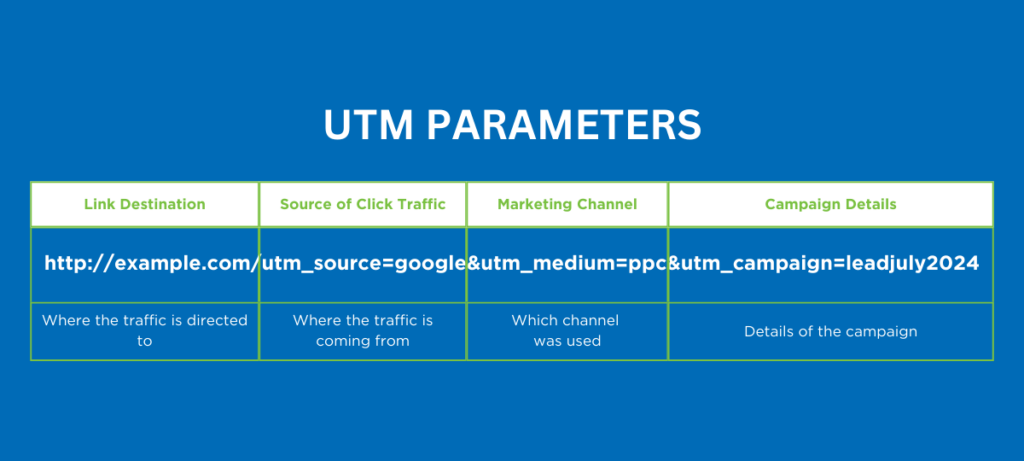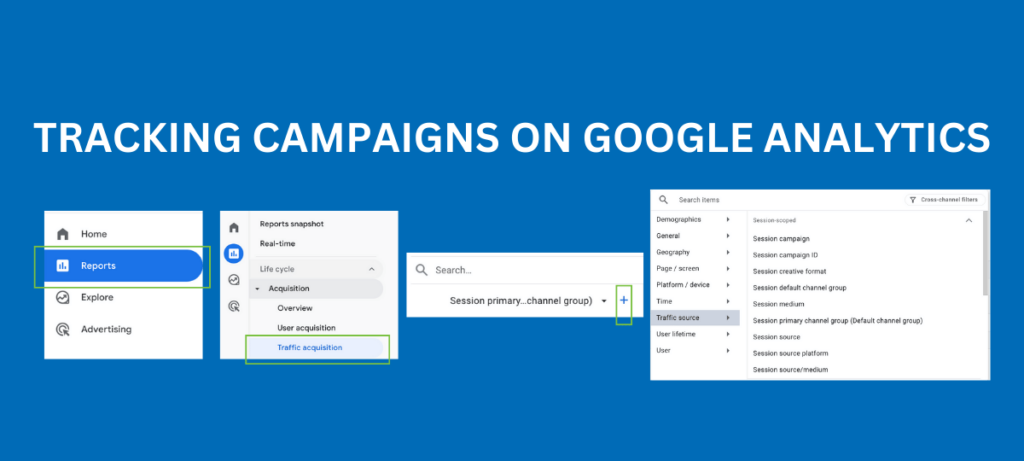
Tracking the effectiveness of your marketing campaigns is crucial. One of the most effective ways to do this is by using UTM parameters.
What Are UTM Parameters?
UTM stands for Urchin Tracking Module. These parameters are tags that you add to the end of your URLs to track the performance of your campaigns across various traffic sources. When someone clicks a link with UTM parameters, the tags are sent back to Google Analytics, allowing you to see detailed information about your campaign traffic.
Why Use UTM Parameters?
You can see where traffic is coming from, which campaigns are driving the most clicks and which channels are most effective.
The Five UTM Parameters
There are five main UTM parameters you can use. The first 3 are the most commonly used but you can choose to track all 5.

- Traffic Source (utm_source): Identifies where the traffic is from (e.g., Google, Facebook, newsletter).
- Medium (utm_medium): Specifies the marketing channel. E.g., CPC (paid ads), Meta, LinkedIn, GBP, email
- Campaign Name (utm_campaign): Name of the campaign to be able to easily identify it (e.g., spring_sale, black_friday).
- Keyword term (utm_term): (Optional) Identifies paid search keywords.
- Content (utm_content): (Optional) Differentiates similar content (e.g., internal-image, video-15-sec)
How to Find UTM Parameters in Google Analytics (GA4)
Click on Reports >> Acquisition >> Traffic Acquisition. Then click on the blue + icon to add secondary dimensions. Under Traffic Source, you’ll be able to track the following parameters:
- Source
- Medium
- Campaign
- Content (Can be accessed via Explore)
This is why it is important to establish a UTM naming formula to make it easy to identify the campaign.

GA4 allows you to go beyond these parameters and create even more should you wish. These include:
- utm_creative_format: the type of creative, like display or video
- utm_marketing_tactic: the marketing tactic you used, like retargeting
- utm_source_platform: The buying platform that directs traffic, like Search Ads 360
Keep in mind that UTM parameters are case-sensitive. If you use ‘Google’ in one parameter, and ‘google’ in another, they will be tracked separately and you will have to spend time collating the data. Generally, you’ll want to make sure you are using the same parameters for consistency and tracking, especially when it comes to the campaign name.
Also note Spaces will be assumed to be a different link. E.g., ‘Spring Sale’ vs ‘SpringSale’. Instead, use hyphens to represent spaces. Figure out a format and stick with it.
How Do You Create a UTM?
You can use UTM tag generator tools such as Google’s campaign URL builder and UTM Builder to create a new URL.
If you have three different locations for your links leading to the same page on your website, you can change the ‘Content’ tag to reflect the referring location.
For example, you’ve added 3 links on your newsletter leading to your home page and you want to identify which of the 3 links had the most clicks, you can differentiate them like so:
- /utm_source=newsletter&utm_medium=email&utm_campaign=SpringSale&utm_content=title
- /utm_source=newsletter&utm_medium=emaill&utm_campaign=SpringSale&utm_content=image
- /utm_source=newsletter&utm_medium=email&utm_campaign=SpringSale&utm_content=button
Only Use the UTM Parameters You Need
You only need the core UTM parameters - source, medium, and campaign for most tracking needs. These cover the basics of where your traffic is coming from, how it is delivered, and which campaign it is tied to. Optional parameters like content and term are useful for more detailed tracking, such as distinguishing between multiple ads or keywords, but if they’re not relevant to your analysis, there’s no need to include them.
Tip # 1: Use a URL Shortener
To make your UTM links look cleaner and more user-friendly, use a URL shortener. There are lots of good URL shortening services which are usually paid for such as Bitly, Short.io and Rebrandly. A free alternative is Tinyurl.
Tip # 2: Track Your UTM Links Inside a Spreadsheet
Keep a record of your UTMs to ensure that your marketing team all have access to the relevant data.
Create columns for the appropriate UTM parameters and all additional details. Here is an example of a Social Media UTMs table.
